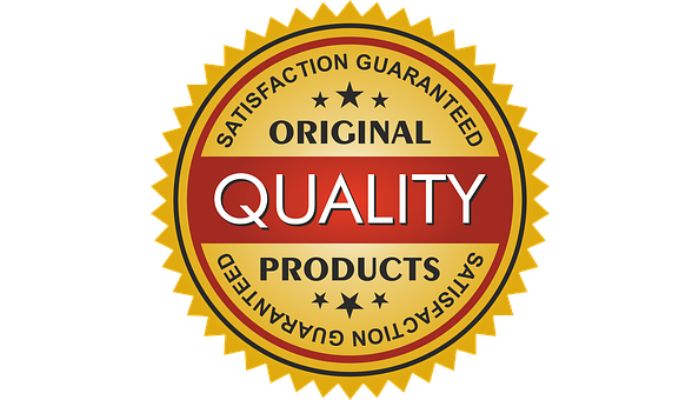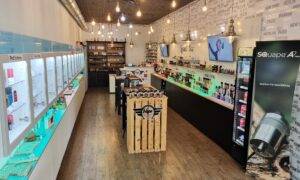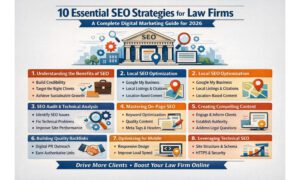The fact that counterfeiting is a global problem cannot be denied. It has become so pervasive that even big brands are not immune to it. There are many instances where counterfeiters have copied not just one product but an entire brand identity and put it on their products with no resemblance to the original ones.
Many of these companies operate outside our jurisdiction, making it difficult to track down their activities and catch them red-handed. However, do not despair. There are several measures you can take that will help you overcome these challenges without any hassle.
Use RFID & NFC Technology to Track the Product
According to Statista, in 2020 alone, the annual loss from counterfeiting in the apparel industry amounted to 26.3 billion euros. In cosmetic products, it was 4.7 billion euros. You must consider leveraging RFID and NFC technology if you don’t want to be the victim of such a huge loss.
RFID (Radio-Frequency IDentification) tags are small chips embedded in a product with unique identifiers that can be read from a distance using a reader. The readers are connected to networks that allow them to share information about products throughout their lifecycle, such as where they were manufactured or whether they have been tested for compliance with specific regulations.
NFC (Near-field communication) tags are similar to RFID tags but are smaller and can be read by smartphones rather than by large-scale readers. In addition to providing real-time data about product lifecycle activities, these technologies allow companies like yours to make informed decisions about how best to market your brand while ensuring the authenticity of your offerings at all times.
Work With Legitimate Retailers
According to a report by the Bank of America, 57% of small business owners are improving their risk mitigation measures. But are these steps enough to overcome the challenge of fake products? The answer is no! You need a constant source of information about where your product will be sold. I recommend working with a new-generation e-commerce site authorized by you as a manufacturer or brand owner and selling your products as authorized sellers on their platform.
If you have decided to sell through an online marketplace, make sure that it is legal and authentic before using them as an outlet for selling your goods. If law manufacturers or brands don’t authorize them, then don’t risk using them at all because there could be some serious consequences if something were brought against you due to the nature of what your company does, i.e., manufacturing.
In addition, trust makes all relationships better. Hence, when selecting which online shops or market share sites might work best for selling your goods abroad or domestically, consider looking at how trustworthy they are by checking reviews from past customers who have used their services in buying/selling goods through these platforms.
Introduce Anti-Counterfeiting Solutions
The International Chamber of Commerce states that the cost of counterfeiting will reach 2.3 trillion USD by the end of 2022. Well, it’s high time you take measures such as implementing an anti-counterfeiting solution to save revenue and brand value. There are several anti-counterfeiting solutions available on the market today, including:
- Use anti-counterfeiting technology – Many types of sensors can detect a fake product and alert users of impending danger, such as counterfeit money detection or phony credit card scanners at stores and banks worldwide.
- Use anti-counterfeiting software – Software is not just for computers anymore. It’s also for smartphones, tablets, appliances, and other consumer products. For example, apps such as “Scanner Pro” allow users to scan barcodes with their phone cameras to buy them directly from Amazon or other online retailers.
- Use anti-counterfeiting hardware – Hardware refers to any physical device used in conjunction with software to function appropriately. For example, for printers using toner ink cartridges to work correctly, they must be compatible with all brands that use different technologies but look similar enough, so consumers don’t realize their mistake until after purchasing one particular type instead of another.
Educate Consumers About the Authenticity of Your Products
According to a report by Visual Capitalist, one in four consumers unknowingly buys fake products. The best way to prevent this is by educating consumers about how they can spot counterfeit products and the consequences if they should buy or sell them.
For example, suppose you run a store that sells authentic designer handbags. In that case, you could educate your customers on how to tell whether their bag is original or not by looking at its stitching and hardware details, e.g., zippers, straps, etc.
You could also inform them that buying counterfeit merchandise helps fund organized crime groups like drug dealers and human traffickers. The funding happens through money laundering schemes such as selling fake sneakers online with stolen credit cards. They make this possible by using Bitcoin as currency for payment processing services like PayPal, where both parties remain anonymous even though others may know their identities due to the lack of regulation surrounding cryptocurrencies.
Once your end users understand this trust me, they will become aware and more cautious than ever about checking the authenticity of the product. This will significantly save your business and help fight the fake product market.
Own All the Major IP Rights
Owning all the primary IP rights is essential for several reasons. It’s a crucial part of the anti-counterfeiting solution. As per the World Intellectual Property Organization, shockingly, about 60% of large companies and 9% of SMEs own only 1 in 3 principal IP rights. This can be disastrous for your company if you don’t have all your bases covered when protecting your brand and products against counterfeiting.
Suppose someone tries to copy or replicate any aspect of your product or company image, such as logos or slogans. In that case, they will infringe upon one or more factors related to the item’s IP rights (patents/trademarks/copyrights). The more things with an overlapping scope between them—whether similar or completely different—the stronger your case becomes when taking action against infringers by using those protected areas as leverage in court proceedings.
It provides peace of mind when it comes down to making decisions about whether something needs further protection through registration with either government agencies or international bodies like WIPO. Knowing how many items fall under a particular type means being aware of which ones may not require much effort in securing due diligence before being able to make those determinations confidently.
Conclusion
There are many challenges in the era of fake products. These challenges can be overwhelming at times. But there are also ways to overcome them. You can overcome anything with the right mindset and a strong sense of purpose.



































